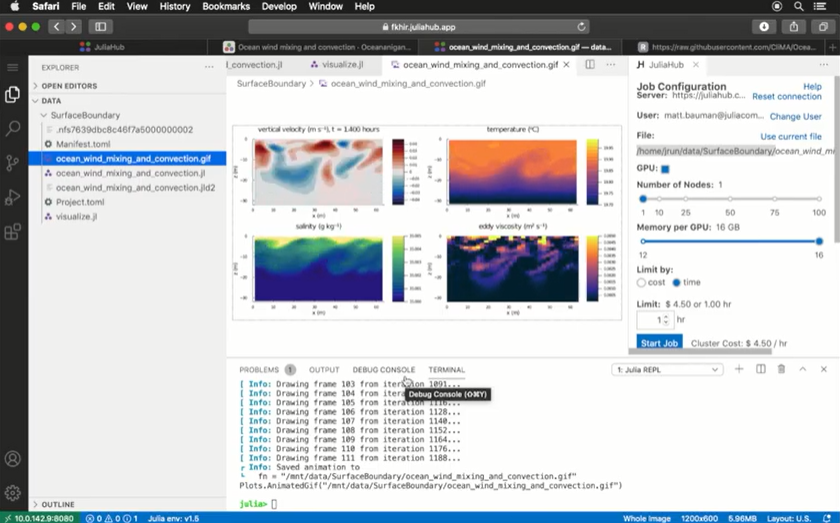 CLOUD
CLOUD
 CLOUD
CLOUD
 CLOUD
CLOUD
Julia Computing Inc., the startup behind a specialized programming language used for tasks such as developing machine learning algorithms and simulating space missions, today announced that it has raised $24 million in funding.
Dorilton Ventures led the round. The venture capital firm was joined by Menlo Ventures, General Catalyst and HighSage Ventures. Bob Muglia, former chief executive officer of data warehousing giant Snowflake Inc., is joining Julia Computing’s board as part of the funding round.
“The wonders of today’s world are created using digital models,” Muglia said in a statement. “The circuits within our smartphones, advanced materials, pharmaceuticals and aeronautics are all examples of advanced technologies built using digital modeling. Although these advancements have been amazing, the tools and systems that support these efforts are decades-old and cannot take full advantage of the cloud.”
Julia Computing claims it has a more modern alternative to those legacy tools and systems.
The startup commercializes Julia, a programming language developed by its co-founders at the Massachusetts Institute of Technology. The startup says that Julia is in use at more than 10,000 organizations worldwide, including Google LLC, Microsoft Corp., Intel Corp. and other tech giants, as well as NASA. The programming language lends itself to many software projects, but is most commonly used to build two types of software in particular: artificial intelligence algorithms and scientific applications.
The reason for Julia’s popularity is that it addresses a key technical limitation found in other languages.
Programming languages are usually defined in terms of being either high-level or low-level. High-level languages are simpler to learn and make it possible to accomplish tasks with fewer lines of code, but they’re slower than their low-level counterparts. An example of a high-level language is Python, which is the go-to choice for data science projects in the enterprise.
Low-level languages, in turn, have more complex syntax and make it possible to perform computations considerably faster. That’s because all developer-produced software code has to be turned into so-called machine code so it may be understood by a computer’s processor. Software written in low-level languages can be turned into machine code faster than high-level code, which speeds up the overall speed of computations. Additionally, developers have more ways of optimizing their code to remove inefficiencies.
Software teams working on an AI or scientific application typically use both a high-level and low-level language. Developers write the first version of the application in the easy to use high-level language to reduce prototyping times. Then, once the prototype of their software is ready, they rewrite everything in a low-level language to optimize performance.
Julia allows developers to skip this process. It has a relatively simple syntax much like high-level languages, which facilitates fast prototyping. But at the same time, it provides many of the performance optimizations found in low-level languages. The result is that software projects can be completed without the time-consuming process of rewriting code from one language to another.
Julia Computing commercializes the language with a paid software-as-a-service service called JuliaHub that enables developers to write Julia code in a browser-based editor. The service helps with code deployment as well. After a project is ready, developers can provision cloud infrastructure for their programs directly through the JuliaHub interface.
For particularly complex projects, the service offers access to a number of specialized scientific applications. Among them is a homegrown simulation tool that Julia Computing claims can use AI to speed up the process of generating simulations by up to 500 times. The startup also offers an implementation of Pumas, a pharmaceutical modeling tool.
Julia Computing says that it will use the new $24 million funding round to add more features to JuliaHub. The startup is working on, among other initiates, an effort to make more scientific applications such as Pumas available via the service.
“Data scientists and engineers are using products that were designed many decades ago. JuliaHub makes it possible to design new drugs and therapies, develop new batteries, simulate a space mission and map out the universe, all while using fewer computing resources and reducing data center emissions,” said Viral Shah, CEO of Julia Computing and co-creator of the Julia language. “Reinforced by our latest funding, we look forward to scaling our team and bringing Julia’s superpowers to more industries and applications.
Julia Computing has raised about $28.6 million to date.
Support our mission to keep content open and free by engaging with theCUBE community. Join theCUBE’s Alumni Trust Network, where technology leaders connect, share intelligence and create opportunities.
Founded by tech visionaries John Furrier and Dave Vellante, SiliconANGLE Media has built a dynamic ecosystem of industry-leading digital media brands that reach 15+ million elite tech professionals. Our new proprietary theCUBE AI Video Cloud is breaking ground in audience interaction, leveraging theCUBEai.com neural network to help technology companies make data-driven decisions and stay at the forefront of industry conversations.